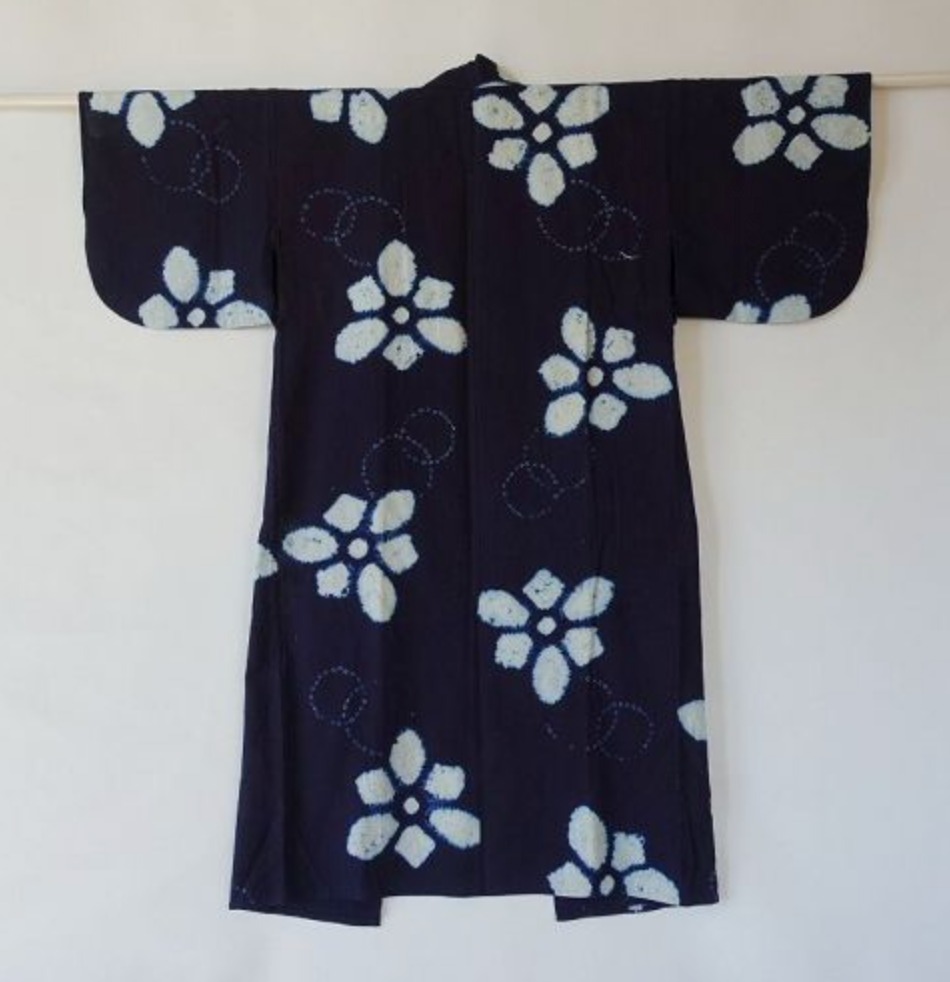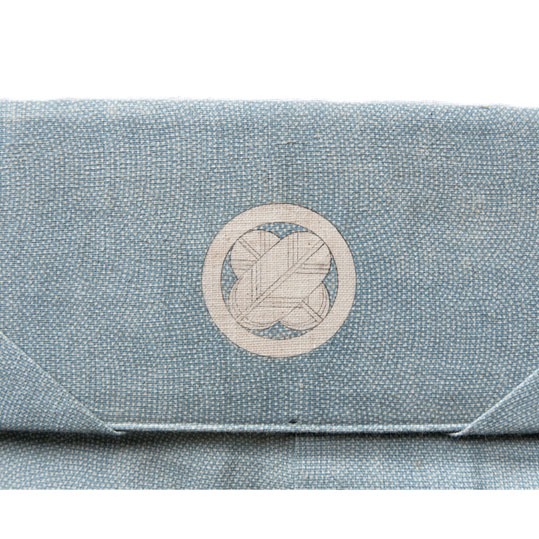2022/06/19 00:51


↑ Kanoko-shibori(鹿子絞り)





Shibori is an ancient practiced manual resist dyeing technique that a form of Tie-dye originated in Japan.
One of the earliest written descriptions of shibori dates to 238 CE, where it was recorded in the Chinese document "Chronicles of the Clans of Wei (Wei chih)" that queen Himiko gifted the emperor of the Wei dynasty over 200 yards (180 m) of "spotted cloth" – potentially describing a form of wax-resist shibori decoration on the fabric.
The earliest surviving examples of shibori-dyed cloth date back to the mid-8th century, donated to the Tōdai-ji Buddhist temple in Nara in 756 CE.

↑ An example of shibori tied in small dots to form a tortoiseshell (kikko) design
Surviving examples of resist-dyeing in China (known as jiao-xie) date to a much earlier time period, the earliest surviving examples dating to 418 CE.
In South America, the earliest surviving examples of pre-Columbian Tie-dye in Peru date from 500 to 810 AD.

↑ Textile, Nazca culture, Peru 450-750AD.
African shibori is gathering attention recently, due to the lack of research upon the historical, sociocultural, economic, and spirituality of Africa, there are actually many regions, tribes, and kingdoms throughout Africa where shaped-resist dyeing has long been practiced.
Those handcraft technologies developed over several hundreds of years into their textile language integrating various substrates making their own marks as if cultural tattoos.

↑ Textile from Mali and southwest Nigeria
The word of "Shibori"(絞り) means "wring or squeeze" in Japanese.
The difference between Tie-dye and Shibori is the technique that conspicuously the methods of Shibori tend to be demanded in a far more intricate and detailed way to lead accurate results, instead Tie-dye is used more straightforward techniques like simply just twisting and tying, commonly is used psychedelic colours mixing together since 1960's.
↑ How to make Tie-dye.
Techniques of Shibori are generally grouped into three categories,
-Kōkechi(纐纈), tied or bound resists.
-Rōkechi(臈纈), wax resists.
-Kyōkechi(夾纈), resists where the fabric is folded and clamped between two carved wooden blocks.
Despite the fact of complicated techniques and requirement of huge capacities to finalize the qualities, Shibori fabric was not used as an open design of the upper class until the middle ages, used to be placed in a low position in Japan historically.

↑ Japanese vintage Shibori kimono
Today the textile industry is one of the anthropogenic activities that most consume water and pollute water bodies because of the way of dyeing fabrics. Handmade products including hand dyed fabrics are now placed into the new parallel markets from the dictatorial capital markets. Many people actually have already started to wake up from those past global issues, recognizing the real qualities and choosing daily products always from the heart.

↑ Blue Shibori dress from MOMOZONO Arte della Sartoria

↑ Kamon(家紋) Japanese antique family simbol from MOMOZONO archive
MOMOZONO Arte della Sartoria takes the responsibilities of demands carefully from those new parallel markets, provides the essence of real handmade qualities and researches the designs for next future ideas beyond the past. .
"Future will come from now here."
This article is dedicated for the death of my dog that had black spots on his skin which made me think and learn how it made his skin as if was using the technique of Shibori art.

↑ Porco Rosso the name of this dog.
Thank you for reading until the end.
Bests,
MZ
↑ Indigo blue Shibori shirts from MOMOZONO Arte della Sartoria
